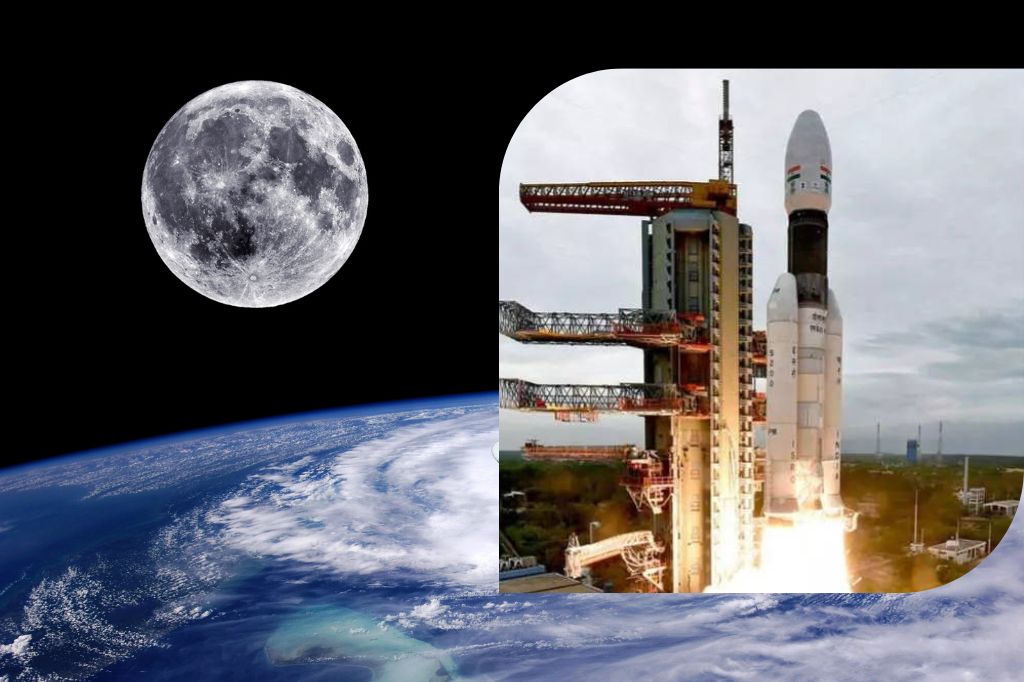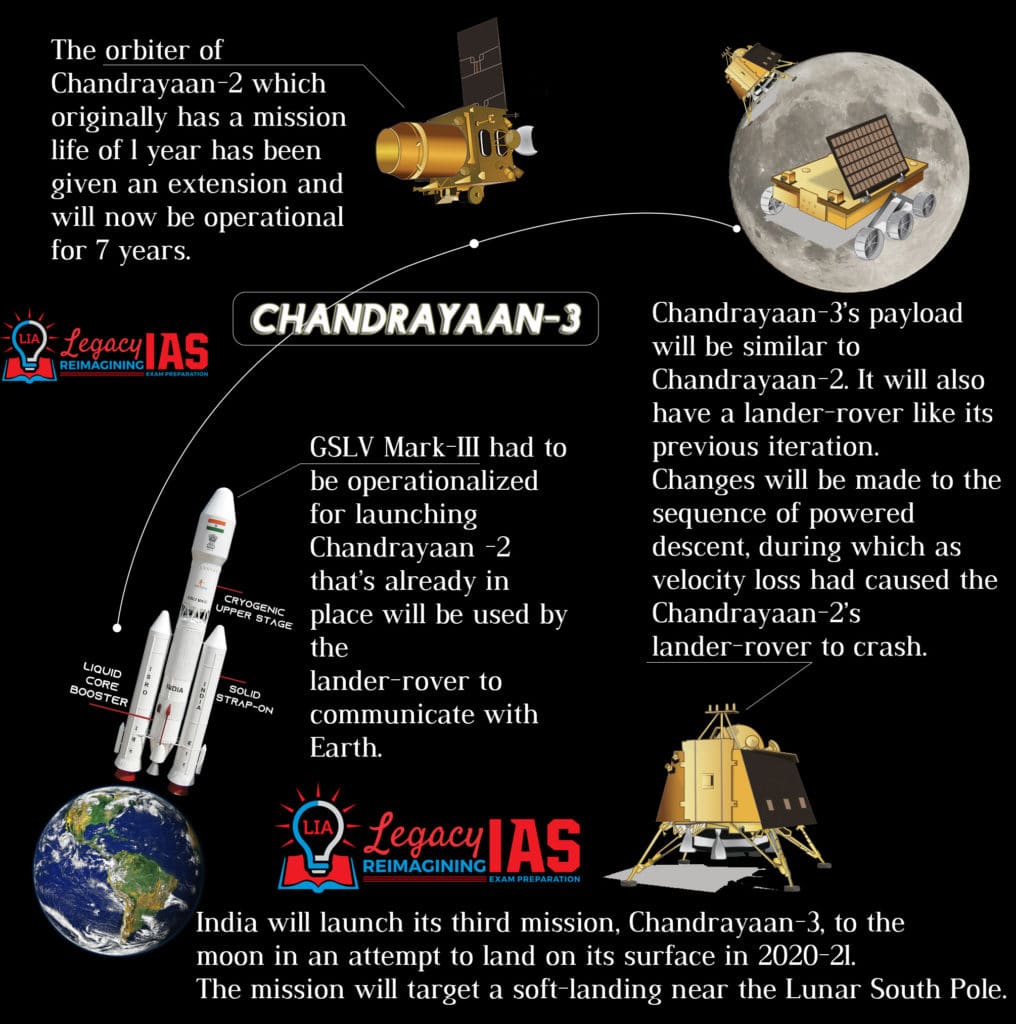Chandrayaan 3: Unveiling India's Lunar Odyssey 🚀

Chandrayaan-3 is the third lunar exploration mission by the Indian Space Research Organisation (ISRO). The mission aims to land a lander and rover on the lunar south pole region.

Chandrayaan-3 was launched on July 14, 2023, at 2:35 pm IST. The lander and rover are expected to land in the lunar south pole region on August 23, 2023.
The objectives of Chandrayaan-3 are to:
- Land a lander and rover on the lunar south pole region.
- Study the lunar south pole region in detail.
- Search for water ice on the moon.
- Conduct other scientific experiments.
The main components of Chandrayaan-3 are:

- The orbiter: The orbiter will orbit the moon and provide communication and navigation support to the lander and rover.
- The lander: The lander will land on the moon and deploy the rover.
- The rover: The rover will explore the lunar surface and collect data.
The scientific instruments on Chandrayaan-3 include:
- A lunar laser altimeter: This instrument will measure the height of the lunar surface.
- A high-resolution camera: This instrument will take images of the lunar surface.
- A spectrometer: This instrument will analyze the chemical composition of the lunar surface.
- A magnetometer: This instrument will measure the magnetic field of the moon.

Chandrayaan-3 is a significant achievement for India's space program. It is the first Indian mission to land on the moon. The mission is expected to gather valuable scientific data about the lunar surface and its environment.
ISRO plans to continue its lunar exploration program with future missions, such as Chandrayaan-4 and Chandrayaan-5. These missions will aim to further explore the lunar surface and its resources.
Chandrayaan-3 is a major milestone in India's space program. It is a testament to the ingenuity and dedication of the Indian scientists and engineers who have worked on this mission. The success of Chandrayaan-3 will pave the way for future lunar missions by India.
Timeline of the Chandrayaan-3 mission:
| Event | Date |
|---|---|
| Launch | July 14, 2023 |
| Earth orbit insertion | July 15, 2023 |
| Translunar injection | August 1, 2023 |
| Lunar orbit insertion | August 5, 2023 |
| Lander separation | August 17, 2023 |
| Rover deployment | August 23, 2023 |
| Rover operation | August 23, 2023 – September 6, 2023 |
| Mission end | September 6, 2023 |
This is just a tentative timeline, and the actual dates may vary depending on the progress of the mission.
Comparison of Chandrayaan-3 to other moon missions till date:
| Mission | Country | Launch date | Landing site | Lander | Rover | Duration |
|---|---|---|---|---|---|---|
| Chandrayaan-3 | India | July 14, 2023 | South Pole | Vikram | Pragyan | 1 lunar day (14 Earth days) |
| Chang'e 5 | China | November 24, 2020 | Oceanus Procellarum | Chang'e 5-T1 | N/A | 23 days |
| Artemis 1 | United States | February 2024 | N/A | Orion | N/A | 4-6 weeks |
| Artemis 2 | United States | 2025 | N/A | Orion | N/A | 3-4 weeks |
| Artemis 3 | United States | 2026 | N/A | Orion | Human-rated rover | 14 days |
| Apollo 11 | United States | July 20, 1969 | Mare Tranquillitatis | Eagle | Eagle | 21.5 hours |
| Apollo 12 | United States | November 14, 1969 | Oceanus Procellarum | Intrepid | Surveyor | 2.5 days |
| Apollo 14 | United States | January 31, 1971 | Fra Mauro Highlands | Antares | Kitty Hawk | 3.6 days |
| Apollo 15 | United States | July 26, 1971 | Hadley Rille | Falcon | Rover | 6.5 days |
| Apollo 16 | United States | April 16, 1972 | Descartes Highlands | Orion | Rover | 71.5 hours |
| Apollo 17 | United States | December 7, 1972 | Taurus-Littrow Valley | Challenger | Rover | 75 hours |
Challenges in Chandrayaan-3 mission
The Chandrayaan-3 mission faces a number of challenges, including:
| Challenge | Description |
|---|---|
| Landing on the moon | Landing on the moon is a very challenging task because there is no atmosphere to slow down the spacecraft and the surface is uneven. |
| Operating in the lunar environment | The lunar environment is very harsh because it is bombarded with radiation from the sun and cosmic rays. It also has extreme temperatures, ranging from -298 degrees Fahrenheit (-182 degrees Celsius) at night to 253 degrees Fahrenheit (123 degrees Celsius) during the day. |
| Providing communication and navigation support | The Chandrayaan-3 mission will rely on the Indian Deep Space Network (IDSN) for communication and navigation support. The IDSN is a network of ground stations that are located around the world. The IDSN will need to be able to track the Chandrayaan-3 spacecraft and relay its communications back to Earth. |
| Protecting the spacecraft from the lunar environment | The Chandrayaan-3 spacecraft will need to be protected from the harsh lunar environment. The spacecraft will need to be equipped with radiation shielding and thermal control systems. |
| Conducting scientific experiments | The Chandrayaan-3 mission will conduct a number of scientific experiments. These experiments will study the lunar surface and its environment. The scientific instruments on the Chandrayaan-3 spacecraft will need to be able to withstand the harsh lunar environment and collect accurate data. |
Additional Read: 🚀 Musk's Take on Chandrayaan-3 vs Interstellar Budgets 💰